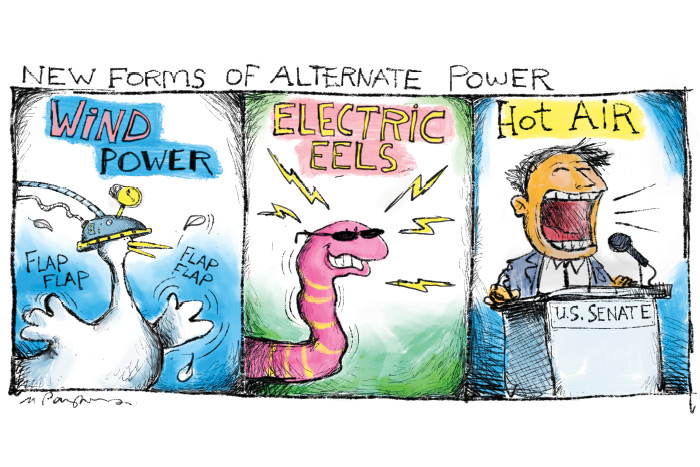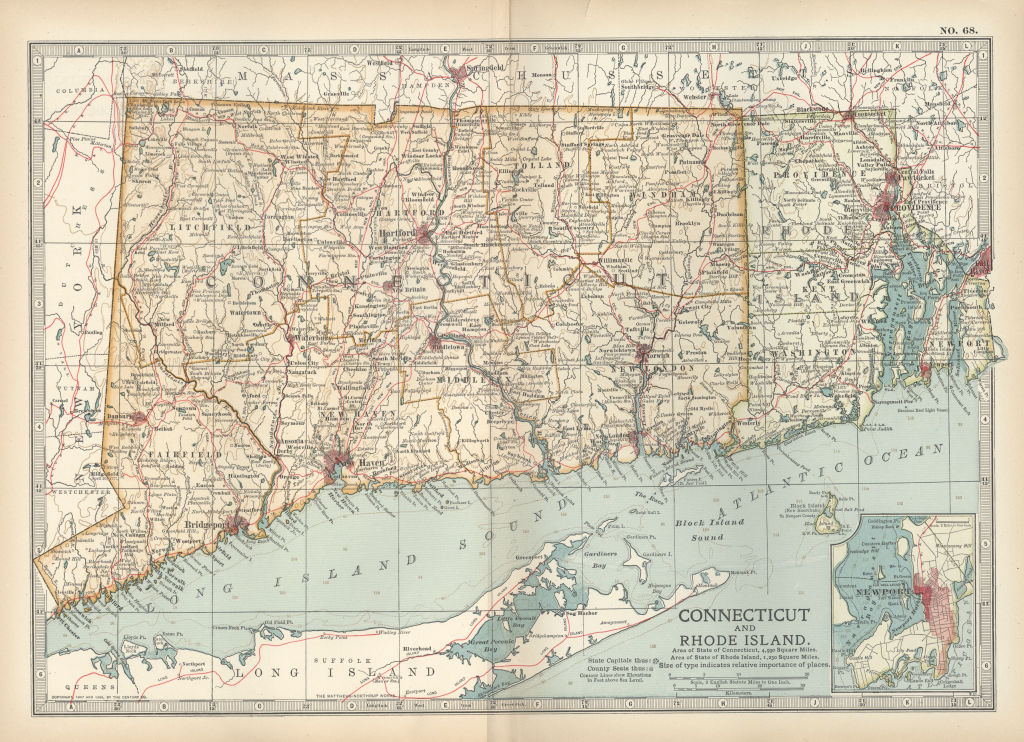Wind Farm: Studying Every Possible Problem, But Nothing About Penguins

Without a doubt, the best plan to provide energy for everybody on the South Fork is the proposed turbine wind farm of windmills that the firm Deepwater Wind hopes to build some 30 miles out to sea from Montauk. Nobody would see the windmills from shore. The wind would blow and the blades would turn and, as a result, through a cable that would come ashore on an ocean beach in the Hamptons, just about every home in the Hamptons—50,000—would get their power directly from the wind that drives these 15 windmills.
And there is a precedent for this. Deepwater Wind has been providing electricity from its five windmills out in the ocean off Block Island for nearly a year. The homes of all 1,500 residents of Block Island are now powered by wind, with some power left over for Narragansett, Rhode Island on the mainland. This Block Island wind farm is the first operating offshore wind farm in America. The one for the East End would be the second.
These windmill farms are important for another reason. The other “free” source of power is solar. But our president has just slapped an import tax on solar panels from China, where a vast majority of the panels in America come from. The cost of panels will, by that one-stroke, increase by 30% almost immediately. Solar becomes less competitive. Wind power moves to the forefront.
At this stage, officials of Deepwater Wind are holding meeting after meeting with various local groups of people looking for assurances that their little patch of the Hamptons will not be disturbed. The fishermen want to know how the wind farm will protect the fish. The lobstermen want to know how the wind farm will protect the lobsters. The environmentalists want to know how the little piping plovers will fare. Meanwhile, those in the tourist industry want to be reassured the windmills really will be out of sight from the shore—even if you jump up and down. And realtors want to know how the cable will affect house sales. And then there are the driftwood and shell collectors who walk the beaches. Will the cable really be 10 feet underground? What’s this stuff about magnetic energy it will give off? Could it hurt their feet? Will it affect cellphone signals?
The officials from Deepwater, with their successful project at Block Island 50 miles away from us to point to, really can answer the questions. They did studies before Block Island went live on lobsters, seagulls and other birds, and even on bats. They’re in the middle of a six-year fisheries study for Block Island. It started two years before windmill operation began there, and is halfway through another four-year go-forward study. There’s been nothing bad to report so far. They’ve written reports on navigational impacts, socioeconomic impacts and impacts on historic properties, wetland areas and sea turtles. During construction off Block Island, they paused in the work so that the endangered North Atlantic right whales could come through in their annual spring swim up the coast toward Maine. And they did it again in the fall when the pregnant mothers all return south to spawn off Georgia.
At this point, Deepwater Wind is looking for a place along the shore where their cable bringing the electricity would make landfall. They are proposing that the cable come ashore at a town-owned stretch of beach in Wainscott. From here it would snuggle 10 feet underground up to the LIPA power station on Buell’s Lane, where the juice would be delivered into the power grid.
The cable’s wind power would be sufficient to reduce and then virtually terminate the need for fossil fuels there, and everywhere else here. They say this location is the best because the distance to the station is relatively short. There are other locations they are considering, but this this is their first choice, and they have asked the town to give them a conditional approval on the site so that upcoming studies can be based on distributing the electricity to the rest of the area from that location.
The town is playing chicken and the egg with this. Can’t you do the studies and THEN come back to ask for the approval, they want to know? No, they cannot. The studies take years. They cost a lot. There was a time when Narragansett said okay to one place at the shore then changed its mind. So they had to do that study all over again.
I know all these studies are necessary, and I guess we have to go through them, but really, this is looking a gift horse in the mouth. It could go on and on.
I have three questions I would like them to address. One is about the future availability of the wind. Yes, it blows. But if they put up enough windmills to provide power to the entire island, not just the 50,000 homes on the East End, you’d be looking at 1,500 windmills, not just 15 windmills. Now, if you are in a sailboat and come in behind another sailboat, you get your wind cut off and you slow down and come to a halt. Wouldn’t that happen to our 15 little windmills from the arrival of 1,485 newer windmills coming in from behind? I know that Deepwater has a contingency plan if, 30 years from now, the wind farm gets all worn out and has to be taken down, but what does Deepwater have in mind for our little 15 windmills? Can you move them further off so we get the first wind coming in? We were here first, after all.
My second question concerns the strength of the cable. The officials say that the cable will be 18 inches in diameter—this seems like quite a big cable, about the size of a tree trunk. Would fishermen’s 4×4 pickups be able to get around it in a storm? Would you get a shock if you stepped on it? Deepwater Wind Vice President Clint Plummer said, “This is a relatively small cable,” and that a cable coming ashore at Jones Beach is five times as thick. Cables have been landing for years, he noted, and none have been a problem for humans or fish.
And what’s the kind of covering on the cable? Surely they are not leaving it just a big thick sizzling piece of third-rail metal. Perhaps the covering could have paintings of other fish on it, so to encourage the real fish to make more fish. You could paint every kind of fish. It might even be an amusement for three-year-olds if it got exposed.
And then there is the third thing. We’ve had this rough weather, and they say it’s getting worse. Plummer mentioned the really thick cable at Jones Beach (that would make it 95 inches thick!). Has there been a study done about all these cables coming ashore along our coasts—there must be hundreds of them—and how, along with the bridges and tunnels, they are helping to keep Long Island all battened down and secure enough to not start rocking in the sea and begin drifting off from the mainland? It could happen.
So what would be the impact of adding this big tree-trunk-sized cable to all this? Have they studied that?



